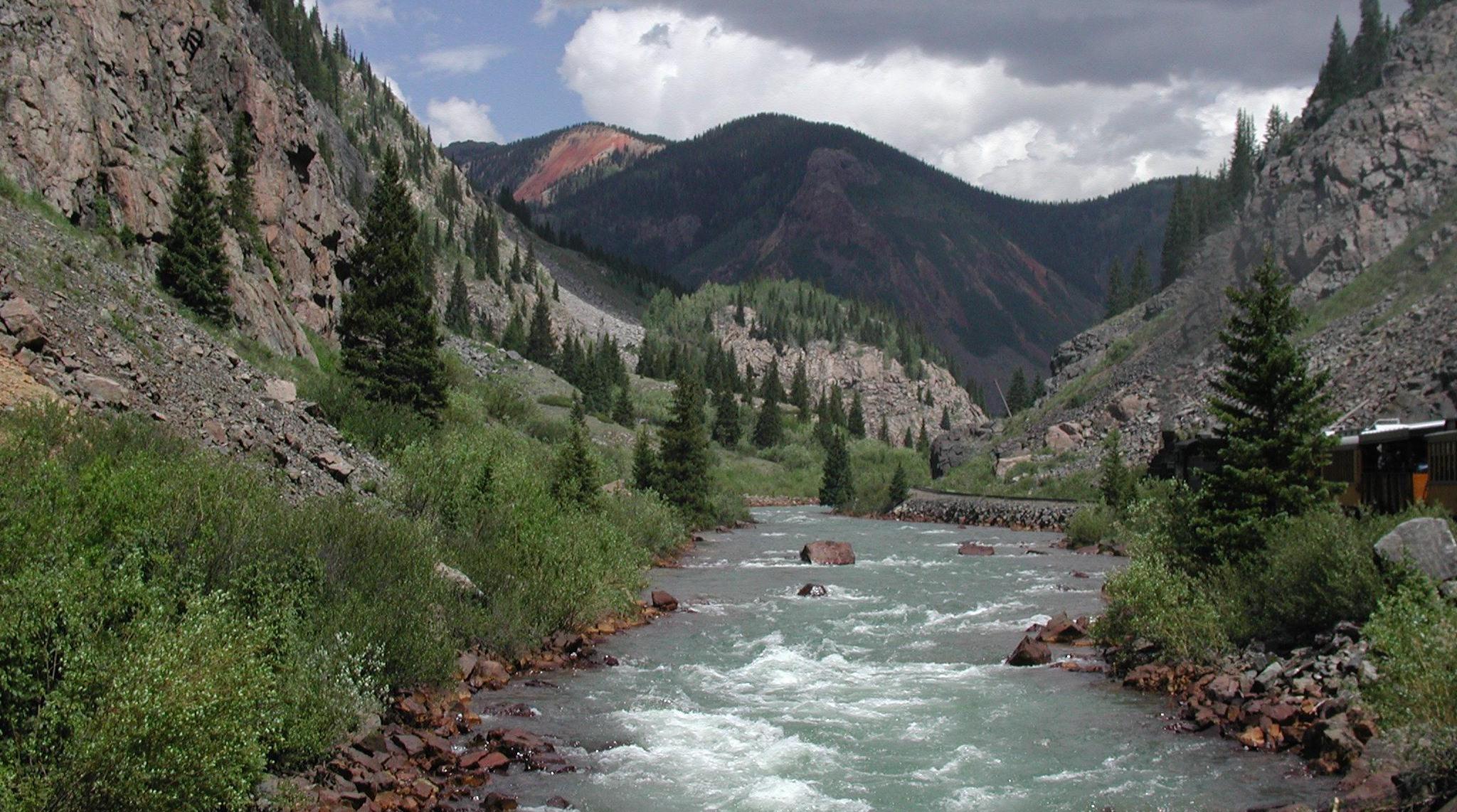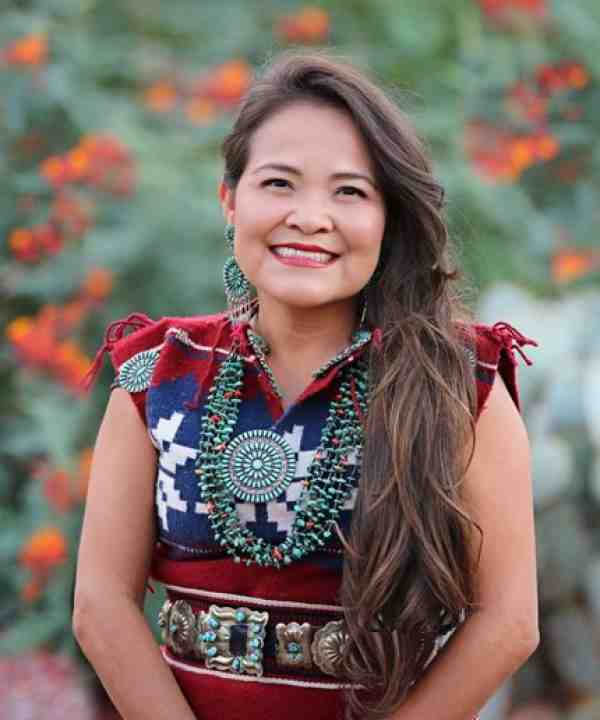March 27, 2018 | Water in the West | Insights
In 2015, 3 million gallons of drainage water came rushing out of the Gold King Mine near Silverton, Colorado, spewing 190 tons of heavy metals and other contaminants into a tributary of the Animas River, which flows into the San Juan River. The U.S. Environmental Protection Agency (EPA), which had been doing some excavation of the passage leading into the mine during an investigation at the site, had triggered pressurized water stored behind a plug at the mine portal. The damage was significant, taking a heavy toll on one community in particular: the Navajo Nation.
“When the spill occurred, it was economically devastating to the region, which is the bread basket of the Navajo Nation,” said Karletta Chief, Assistant Professor of Soil, Water, and Environmental Sciences at the University of Arizona. “It also had a traumatic impact on people. They view the river as the male deity of the Navajo homeland. Seeing it turn yellow really devastated the people.”
Indigenous Knowledge and Water Science
The Animas River following the Gold King Mine Spill in 2015. Source: Riverhugger, Creative Commons 4.0.
Chief, a hydrologist and a member of the Navajo Nation herself, has spent her career integrating rigorous scientific study with Indigenous knowledge to address urgent water quality problems. Raised in a remote community of Black Mesa, Arizona, where she often served as a translator for her family, Chief went on to receive undergraduate and master’s degrees from Stanford and a PhD from the University of Arizona. Her work on the Navajo Nation on water issues has earned her a place in Stanford’s Multicultural Alumni Hall of Fame.
“I grew up in a tribal community where we were taught to just listen to elders,” says Chief. “When I came to Stanford I had to unlearn that. You were expected to debate your issue, and we are trained to do that as western scientists. You want to interject. A lot of times this is for good reason. Scientists are curious and interested. But it’s important to sit back and just listen.”
Working closely with Navajo Nation community members, Chief focuses on spill response, water quality testing, and supporting local decision-making on key water resource issues.
Water quality is an important issue for the Navajo people, yet access to clean water is a real challenge. More than 8,000 homes on the Navajo reservation do not have access to potable water. Navajo people on the reservation travel an average of 24 miles each way to haul their drinking water. Groundwater contamination and depletion on native lands from mining activities is also a serious concern.
After the Gold King Mine spill, many local Navajo farmers either couldn’t irrigate their fields due to the closure of irrigation intakes or chose not to for fear of contamination. As a result, crop yields were seriously impacted. As many as 2,000 Navajo farmers and ranchers are estimated to have been affected by the spill. Chief, who has been an active force in understanding the Gold King Mine disaster and its impacts, developed a study with tribal members on short-term exposure to mining contaminants.
Typical environmental assessment methodologies do not adequately account for the social and cultural impacts of mining nor integrate Indigenous ways of knowing. “The elders gave us guidance and asked us to incorporate the fundamental Diné (Navajo) philosophy of hózhó,” Chief explains. Sa'ah Naaghái Bik'eh Hózhóón has to do with harmony, restoration, and healing, as well as following the Navajo approach to problem solving.
“I don’t think the EPA considered traditional knowledge in their approach,” says Chief. “In ours, we did this through listening sessions and allowing people to talk and write down their experiences. We had the help of the traditional cultural experts and elders that were involved when we were writing the proposal. This is important because it raises the need to have more accurate ways to do these risk assessments, particularly with Indigenous communities where they use rivers in many more ways than recreation. They revere the river in spiritual ways.”
Community-engaged research also requires communicating scientific findings back to communities in a language and format that is accessible. “When we reported back, we needed the help of cultural experts to make sure that we were doing that effectively,” says Chief. The goal for this work is to support tribal members in using research to make their own assessments, draw their own conclusions, and determine how to heal their community and environment. “Not everyone has gone back to farming,” explains Chief. “But [the research] has definitely helped in answering some questions.”
Communicating the details of spill response to non-English speakers was a challenge. When the Navajo language lacked a word to describe a water contaminant like manganese, Chief and her team worked with traditional knowledge holders and medicine people to name the element. The community outreach “really helped in terms of people understanding what we’re doing and the results that we share; coming back to restoring harmony and healing for the people as a result of this traumatic event,” explained Chief.
To share their results, Chief’s team participated in teach-ins organized by community environmental organizations. They broadcasted their findings over radio forums in Navajo language and presented at various chapter meetings, representing different parts of Navajo Nation.
More recently, Chief has co-organized a conference on Indigenous perspectives on water, with community leaders taking a prominent role. Chief has also developed short 1-2 minute videos that can be streamed in the waiting rooms of hospitals. “When you’re engaging tribes, not everybody is the same. There are different sectors of the tribal community that need to be considered,” says Chief. “It is not always the young people. There are health experts and elders. It is not always the tribal leaders.”
“I am still learning about how to report back to the community,” Chief explains. “There is such a large number of people in different sectors of the Navajo population, so it is a really daunting task to reach out to everybody.”

The Animas River in 2012, prior to the Gold King Mine Spill. Source: Gio la Gamb, Creative Commons 3.0.
Responding to the Gold King Mine Spill
Chief is continuing her community-based research with tribal partners. This includes the Navajo Gold King Mine Exposure Project, a household-level biomonitoring initiative to investigate biological accumulation of toxins in community members over time. Initial findings have shown no significant evidence of long-term health impacts from the spill, although the research team did find slightly elevated arsenic levels for Navajo people compared to the general U.S. population. It remains to be seen what these results will look like as time goes on.
Recent investigation by the EPA has also detected elevated lead levels at sites near the mine up to 100 times higher than the danger level for wildlife. There are approximately 5,105 abandoned mines in Colorado, 3,989 in New Mexico, 10,697 in Utah, and 24,183 in Arizona.
“It’s a sleeping giant, and a wake-up call for everybody to act quickly on stabilizing the area and reducing risk in the future,” cautions Chief. “There are thousands of abandoned mines in the region and the risk of a spill like this is really high.”
In 2016, about one year after the Gold King Mine disaster, the EPA added the Bonita Peak Mining District as a Superfund site. The district is made up of 48 mining-related sites including Gold King.
Although the EPA has declared Superfund cleanups a priority the Gold King Mine cleanup remains lingering in the study stages. Meanwhile, the legal fight for fair compensation for the Navajo Nation continues. A ruling in the United States District Court for the District of New Mexico against Environmental Restoration, LLC. (the contract company that excavated the mine and caused the spill) upheld the Nation’s claims of negligence and also upheld their right to seek punitive damages. All of which harkens back to the importance of Chief’s meaningful engagement with Indigenous knowledge in her research. The issue in seeking damages for the Navajo is keeping accurate records and receipts, which may not fully reflect their losses in terms of the cultural importance of the river and surrounding lands.
Chief’s next project supported by a million dollar grant through the National Science Foundation (NSF) Research Traineeship program is to develop a new training program at the University of Arizona. The program, which is currently accepting applications for graduate students, will include learning the fundamentals of energy and water efficiency and a project-based class working with Indigenous communities. The emphasis is on interdisciplinary thinking to encourage “a holistic view of problem solving that is needed to bring water to Native American communities,” says Chief.
One of the principles that the program will cover is the importance of understanding the diversity of Native American tribes. "Across hundreds of tribal communities, they are diverse in many ways,” Chief explains. “Within a tribal community, there are many more ways that the tribal community is diverse. It’s not one size fits fit all. So, when scientists are working with tribal communities it’s important to remember that. We need to make sure that we do not apply other tribal experiences to the tribes we’re working with,” says Chief. “More and more it is really about listening, and especially working with grassroots organizations that are the movers and shakers.”


![[Woods Logo]](/sites/default/files/logos/footer-logo-woods.png)
![[Bill Lane Center Logo]](/sites/default/files/logos/footer-logo-billlane.png)